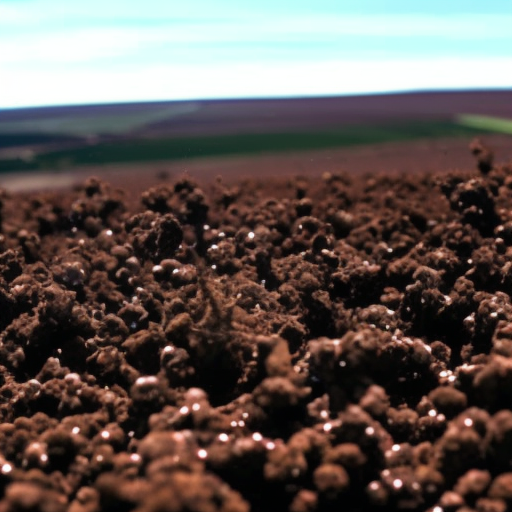
Global Soil Biodiversity Observatory Launches
The Global Soil Biodiversity Observatory (GLOSOB) was launched on December 17 through a high-level Ministerial Dialogue. This significant event was attended by ministers of environment and agriculture from various countries, as well as delegates from the Food and Agriculture Organization (FAO) and the Convention on Biological Diversity (CBD).
Why GLOSOB?
While above-ground biodiversity is well-known and its protection is promoted, there is little attention given to below-ground biodiversity. Consequently, in many countries, there is still a lack of basic knowledge regarding the diversity of soil organisms that contribute to important ecosystem services. How can we protect what we do not know? Therefore, there is a need for soil biodiversity information, and GLOSOB aims to provide it.
Above and below-ground biodiversity are closely interconnected, and management and conservation practices must consider both habitats. The mission of GLOSOB is to serve as an Observatory that provides data and information on soil biodiversity to guide evidence-based decision-making. It is a country-led effort to monitor and predict soil biodiversity on a global scale, as well as assess the impact of human activities on soils and their ecosystem services. The measurement, mapping, and monitoring of soil biodiversity will be conducted in countries, at agreed sites, using standard protocols, methods, and tools, while considering national capacities.
GLOSOB will strengthen national capacities in:
- Laboratories, with regard to state-of-the-art methods and tools for measuring soil biodiversity according to standard operating procedures (SOPs).
- National experts, to facilitate the interpretation of soil biodiversity data and information.
- Institutions, in the measurement, mapping, and monitoring of soil biodiversity.
- Land users, in adopting sustainable land uses, management, and conservation of soil biodiversity for sustainable and resilient agriculture, bioremediation, and ecosystem restoration.
- Policymakers, to support the development of public policies on soil biodiversity and evidence-based decision-making.
For more details about the launch, including a summary of the presentations, speakers, and statements, please visit the IISD Earth Negotiation Bulletin.
SDGs, Targets, and Indicators
| SDGs | Targets | Indicators |
|---|---|---|
| SDG 15: Life on Land | Target 15.5: Take urgent and significant action to reduce the degradation of natural habitats, halt the loss of biodiversity, and protect and prevent the extinction of threatened species | – No specific indicators mentioned in the article |
| SDG 2: Zero Hunger | Target 2.4: By 2030, ensure sustainable food production systems and implement resilient agricultural practices that increase productivity and production, that help maintain ecosystems, that strengthen capacity for adaptation to climate change, extreme weather, drought, flooding, and other disasters, and that progressively improve land and soil quality | – No specific indicators mentioned in the article |
| SDG 6: Clean Water and Sanitation | Target 6.6: By 2020, protect and restore water-related ecosystems, including mountains, forests, wetlands, rivers, aquifers, and lakes | – No specific indicators mentioned in the article |
| SDG 13: Climate Action | Target 13.3: Improve education, awareness-raising, and human and institutional capacity on climate change mitigation, adaptation, impact reduction, and early warning | – No specific indicators mentioned in the article |
1. Which SDGs are addressed or connected to the issues highlighted in the article?
- SDG 15: Life on Land
- SDG 2: Zero Hunger
- SDG 6: Clean Water and Sanitation
- SDG 13: Climate Action
2. What specific targets under those SDGs can be identified based on the article’s content?
- Target 15.5: Take urgent and significant action to reduce the degradation of natural habitats, halt the loss of biodiversity, and protect and prevent the extinction of threatened species
- Target 2.4: By 2030, ensure sustainable food production systems and implement resilient agricultural practices that increase productivity and production, that help maintain ecosystems, that strengthen capacity for adaptation to climate change, extreme weather, drought, flooding, and other disasters, and that progressively improve land and soil quality
- Target 6.6: By 2020, protect and restore water-related ecosystems, including mountains, forests, wetlands, rivers, aquifers, and lakes
- Target 13.3: Improve education, awareness-raising, and human and institutional capacity on climate change mitigation, adaptation, impact reduction, and early warning
3. Are there any indicators mentioned or implied in the article that can be used to measure progress towards the identified targets?
No specific indicators are mentioned or implied in the article that can be used to measure progress towards the identified targets.
4. SDGs, Targets, and Indicators
| SDGs | Targets | Indicators |
|---|---|---|
| SDG 15: Life on Land | Target 15.5: Take urgent and significant action to reduce the degradation of natural habitats, halt the loss of biodiversity, and protect and prevent the extinction of threatened species | No specific indicators mentioned in the article |
| SDG 2: Zero Hunger | Target 2.4: By 2030, ensure sustainable food production systems and implement resilient agricultural practices that increase productivity and production, that help maintain ecosystems, that strengthen capacity for adaptation to climate change, extreme weather, drought, flooding, and other disasters, and that progressively improve land and soil quality | No specific indicators mentioned in the article |
| SDG 6: Clean Water and Sanitation | Target 6.6: By 2020, protect and restore water-related ecosystems, including mountains, forests, wetlands, rivers, aquifers, and lakes | No specific indicators mentioned in the article |
| SDG 13: Climate Action | Target 13.3: Improve education, awareness-raising, and human and institutional capacity on climate change mitigation, adaptation, impact reduction, and early warning | No specific indicators mentioned in the article |
Behold! This splendid article springs forth from the wellspring of knowledge, shaped by a wondrous proprietary AI technology that delved into a vast ocean of data, illuminating the path towards the Sustainable Development Goals. Remember that all rights are reserved by SDG Investors LLC, empowering us to champion progress together.
Source: fao.org

Join us, as fellow seekers of change, on a transformative journey at https://sdgtalks.ai/welcome, where you can become a member and actively contribute to shaping a brighter future.






